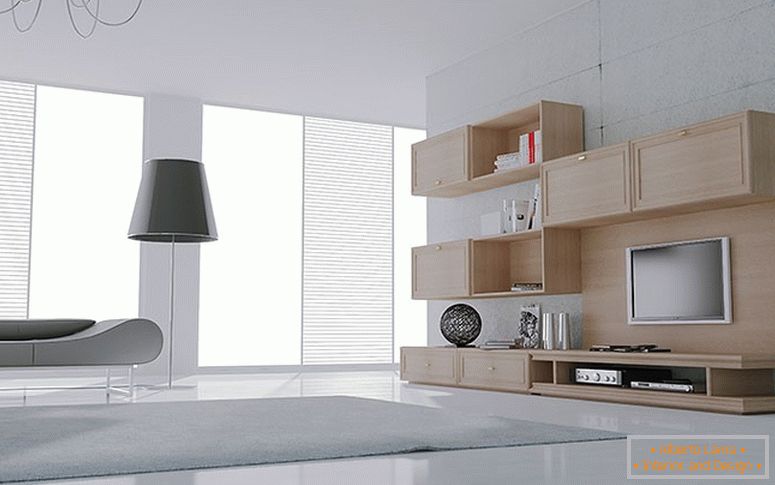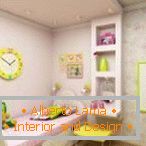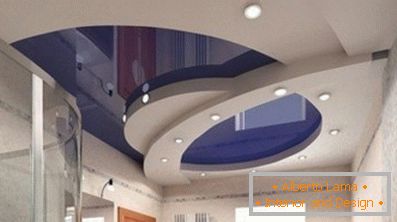
The board is traditionally associated with wood products. In fact, the first samples were made of stone and baked clay. Such plaques were not used in decorating houses, but played the role of information plates on which important data for descendants were stored. In everyday life slate, magnetic, cutting, ironing and chalk boards are used. More than three centuries ago, the first circular saw was invented. With its help, it was possible to expand the production of boards to industrial scale. The unit replaced impractical pit-saws, which were used in sawmills earlier. The boards in the interior have been used since ancient times, when a man learned to process wood. And they used them both as a rough finish, and in the form of decor. Previously, the material was valued primarily because of its cheapness and availability. Now the priorities have changed and in wood boards people are more attracted to their environmental friendliness, as it becomes more difficult to find something natural in the market of high-quality imitations. As for accessibility, then the use of rare, valuable breeds has become fashionable, so it is difficult to call them cheap. Although a simple pine managed to maintain its niche in the market, it is used only in the most unpretentious interiors. About how to properly decorate the boards with surfaces in the house, and we'll talk further.
Especially valuable for designers are the aged boards, as now the use of rarities and antiques is popular.
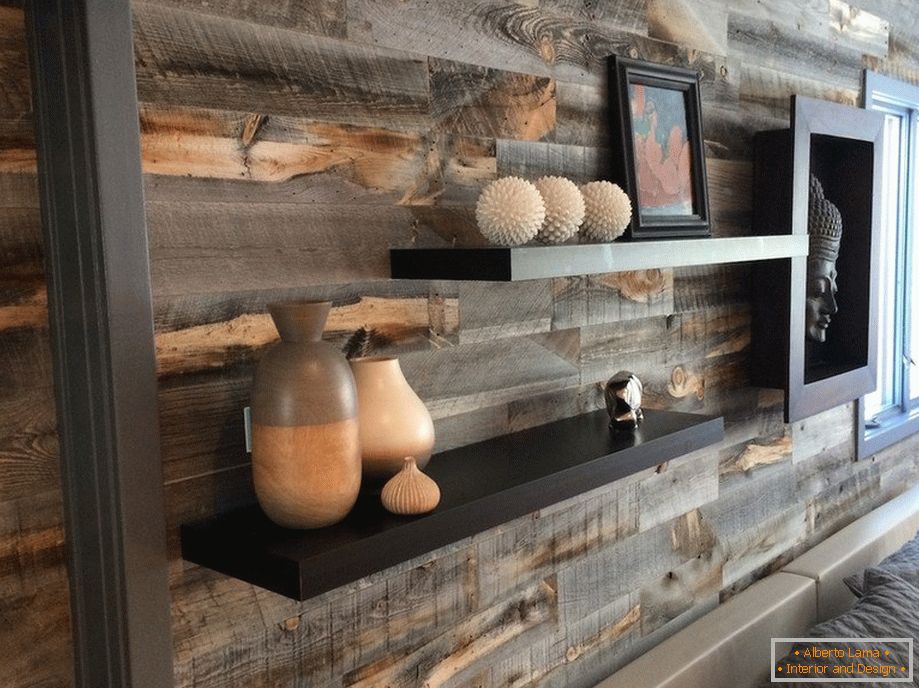

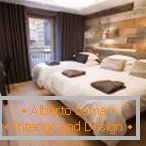
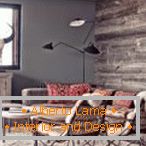

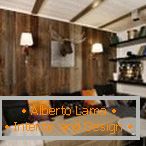
Types of finishing board
The boards are used in the decoration of walls, floors and ceilings. Depending on the processing technology and characteristics, they are classified into the following types:
- Lining. Used for exterior and interior decoration. The board is a thin sheet, which are connected with each other on the principle of "spike-groove". The material can be made of wood, wood waste (MDF) or plastic. Depending on the profile, the lining is divided into types: American, standard, calm, euro.
- Simulation of the beam. This species only recently began to be considered as an independent species. Previously, he was classified as a subgroup of lining. Simulation of the bar is made of carefully dried wood and has an impressive thickness. It is difficult for a commoner to distinguish this finishing material from the original, as he thoroughly repeats its texture.
- Terraced boards. They are made of a composite of wood and polymers. The material is used for finishing terraces. Because of the layout features, strict requirements for strength and stability are imposed on the board. The material must be treated with special compounds, and grooves are applied to its surface, which reduce slipperiness and help to cope with additional loads in the form of temperature changes and changes in humidity level.
- Block house. It is a board with a semicircular front side. From one log, four blocks of block house are cut, and the core is allowed to be processed for the usual lining.
- Planken or facade plank. The material is mainly used in the exterior. In many respects the planken is similar to a terrace board. Fix fragments to each other in two ways: back-to-back and overlap. Regardless of the methodology between the modules, there is always a technological gap that ensures air circulation.
- Parquet board. A multi-layer material that is used for finishing the floor. It is made of several sheets of wood, which are covered with a protective film. The closest "relative" and competitor of the parquet board is laminate. It is less whimsical, although it is made according to a similar principle.
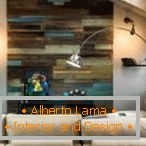
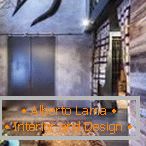


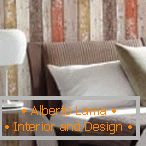
It is worth mentioning the granary board. This species includes any wood materials that have already been used previously and reapplied. Old fragments of decoration help create a light, careless interior in a rustic style, country, ethnic. Three groups of boards are distinguished by the propylenes of the "sides":
- Unedged timber. The boards are processed only on two broad sides, and the two side leaves are left in kind.
- Trimming. All of their four facets are propylene and have smooth, even surfaces.
- Half-finished. Process only three sides, and the fourth (short sidewall) retains its original appearance.
- Gorbyl. These boards handle only one wide side. Gorbyl is often used in the manufacture of temporary fences.

Also, the boards are sorted into groups according to the type of wood from which they are made. Conditional classification can be simplified to valuable and simple.
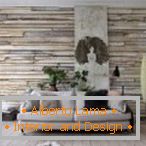
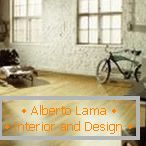

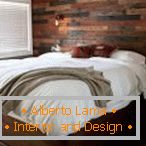
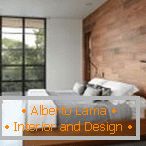
Applications
The board is a universal material. It is used for finishing all surfaces inside and outside the house without restrictions. Modular elements of wood look original in the rooms and are in harmony with the modern loft, chalet, art deco and with a lighter provence. A number of ethnic interiors, country and rustic, Scandinavian, eco-style without this material do not do at all.


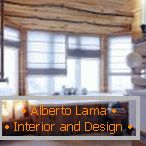
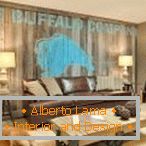

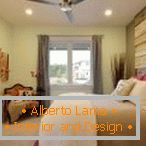
Wall decoration
The board is suitable for budget and luxurious walls. For the plating of surfaces in elite styles it is recommended to choose a wide and thick wall board. The dyeing field will give the room a cosiness and make it more homely. With the laying of a regular board, you can experiment: to decorate with a Christmas tree, rhombuses, diagonally or create whole mosaics from rich wood shades. Rough, poorly treated surfaces are ideal for country interiors, and smooth ones are suitable for stricter styles. Coloring with the ombre effect will create an inimitable color gamut due to gradient transitions of hues.
See also: Fashion interior 2018: +80 photos of novelties in the world of design 


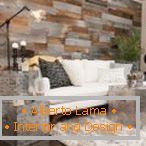
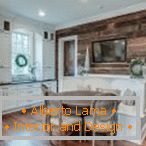
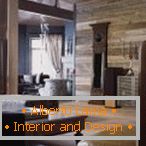
Finishing the ceiling
The ceiling is also covered with boards, although traditionally this surface is decorated with white plaster. In the spacious rooms you can preserve the natural color of the wood. In tight spaces with low ceilings, it is better to use coloring in light shades. The combinations of the surfaces of the board and plaster, separated by ceiling beams, are inimitable. Use similar options in the style of the chalet. To decorate the ceiling surface, use a lining, edged board, narrow slats, a special set of modular elements similar to parquet, but decorated with a layer of veneer on the front side. Since the material in the interior dominates, it is advised to combine it with plaster and simple wallpaper without catchy drawings.
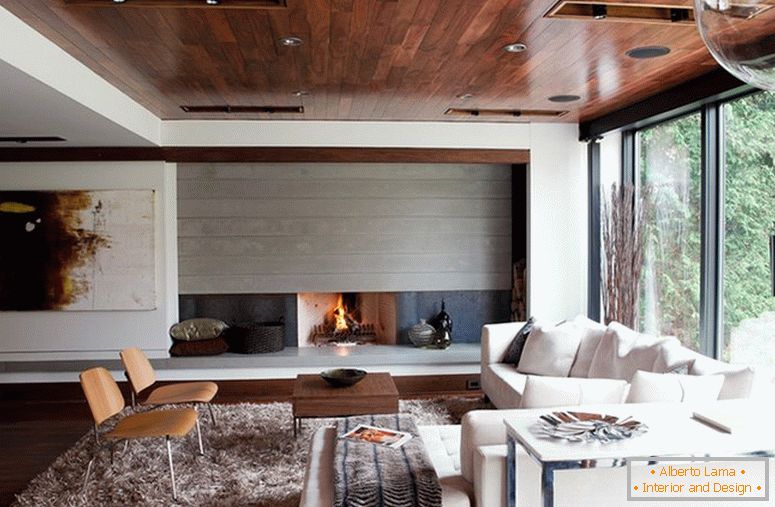

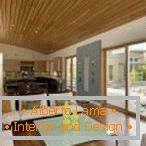
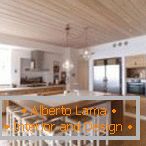
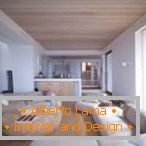
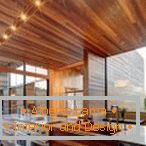
Flooring
For finishing the floor use laminate, parquet and modern engineering board. These materials are elite and win in comparison with linoleum and carpet. Parquet is suitable only for hallways, living rooms, bedrooms and nurseries. It is not recommended to be placed in rooms with an aggressive microclimate: kitchens and bathrooms. Laminate is less selective and perfectly adapts to special conditions. The engineering board is a relatively new finishing material. It is similar to the parquet analogue, but consists of two layers: the outer layer of valuable rocks and the inner one of high-quality plywood. Above the floors covered with an engineering board, it is possible to carry out a number of manipulations: grinding, painting, processing. As a result, the surface becomes as much like an array of wood.
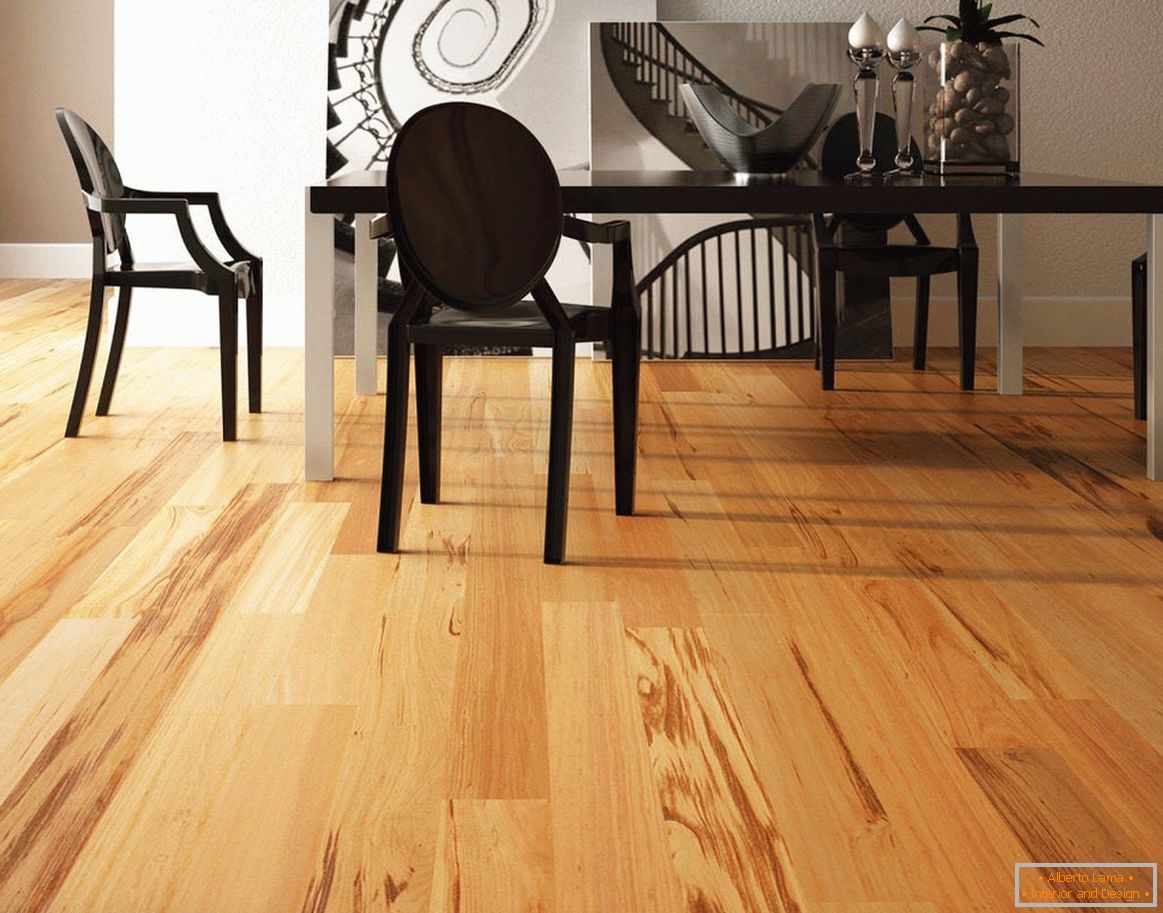
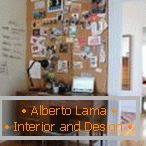
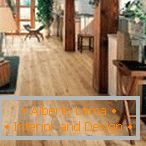

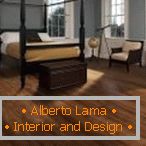
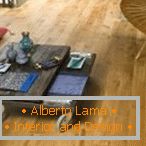
Other Applications
The material is widely used in decorating furniture surfaces and large interior objects. The latter include partitions, false walls, doors, bar counters. The boards are paved with podiums, which become the conditional center of any room and invariably attracts everyone's attention. Furniture from this material looks very original. Boardboards are decorated with sofas, chairs, armchairs, coffee tables, chests of drawers and shelves. Such furniture organically looks in eco-interiors and premises, decorated in Scandinavian style, provence, country. To shade the naturalness of the decor, the walls are pasted with photoball with thematic forest landscapes. Special warmth in the kitchen will bring a set made of thermo-wood. Of the rough "granary" boards make a high head of the bed. The original interior object will be an ornament of the Scandinavian style and perfectly combined with other natural elements: deer horns, animal skins or decor of real twigs.
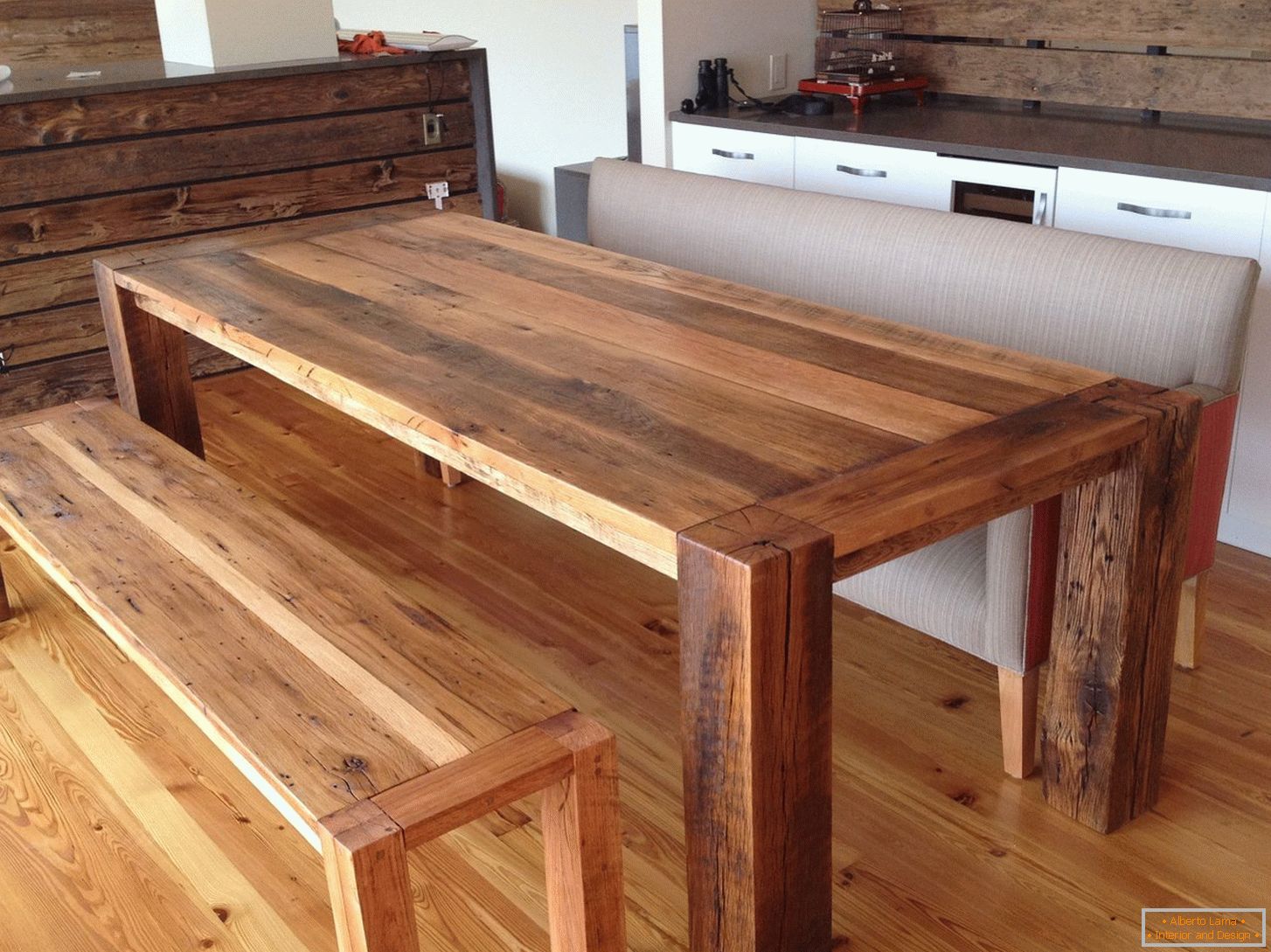
Furniture from the planks organically looks not only in the interiors of houses. It can become a replacement for garden elements, if the kit is installed on a terrace, backyard or in a gazebo, a bath.
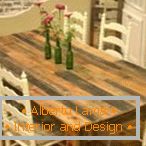
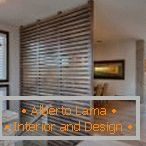
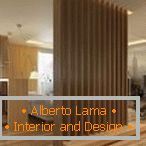
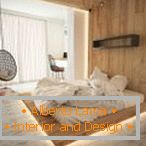
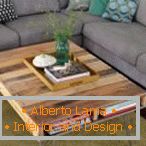
Recommendations for registration
The board is added to the interior in strict dosages. In an environment, a balance must be maintained. This is especially important with respect to the old board, which looks slightly gloomy. To decorate does not seem satiated, it is recommended to follow simple rules:
- Of the boards it is better to perform only two or three large interior objects or decorate them with only one accent wall. Do not sheathe the material around the perimeter.
- If the plates are used in furnishings, the optimal background for them will be brickwork. In the loft environment, the coarse elements will look especially colorful.
- Combine wood with modern materials and expensive textiles. Then the interior will be stylish, not obsolete.
- Pay attention to the width, thickness of the board, its texture and color. These characteristics should correspond to the general stylistic concept.
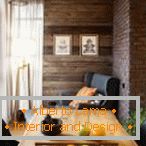

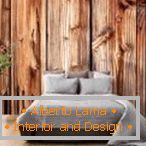
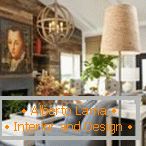
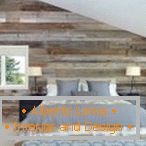
Fortunately, the boards can be processed and, if necessary, dismantled or repainted. Having made a mistake in the design, you can always fix it.
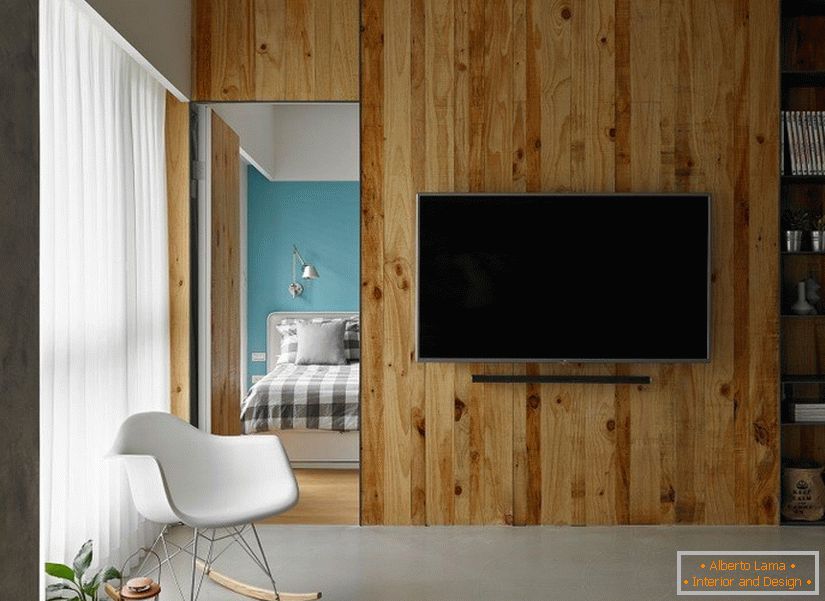
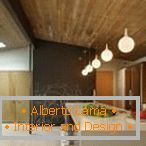
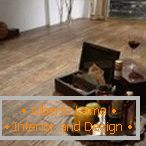
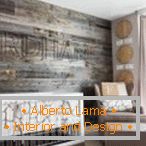
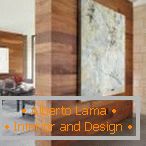
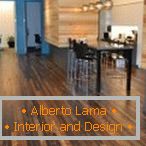
In which room and how to arrange
In the large living rooms it is recommended to trim the entire accent walls with old boards. Against this background, modern furniture with expensive textiles will look original. The contrast between cracks and scuffs of already used wood and elegant, rich surfaces will give a special twist to the situation. In the kitchen, boards are made of boards, the headset, stools, chairs and sometimes countertops. In the combined versions, the material is decorated with partitions. In the interior of the cabinet boards are recommended to sheathe the "library corner" - a place for internal concentration, where you can tune into a working mood. In the bedroom, the material is adorned with part of the wall, ceiling, head of the bed, bedside table or dressing table. To emphasize these elements, it is advised to add decorative lighting in the form of light bulbs along the perimeter of the room or carefully disguised devices located in the immediate vicinity of the accent parts.


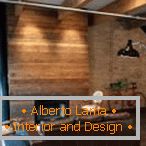

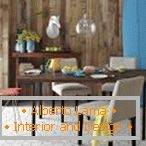

Artificial aging
To artificially grow old plates, you will need a rigid brush, a varnish, brushes, a paint and a pair of sponges. This method is simple and least expensive. First, the surface is treated with a coarse brush with a metal bristle. With its help, you can work out the relief and highlight specific areas. Then apply a coat of varnish. After it dries, the boards are painted. A couple of minutes after applying the paint in some places, it is removed with a sponge to get the effect of a slightly frayed wood. The brush can be replaced with a plane or abrasive powders. The main thing is that the instrument "get out" to the texture layer of wood with a bright pattern.

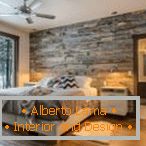


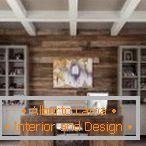

Conclusion
Recently there has been a tendency to use plain, coarse-processed materials even in elite styles. A person, cut off from nature, increasingly wants to create a kind of semblance of its corner at home. Wooden boards help to successfully cope with this task. In ekostile apply unexpected combinations of aged surfaces with real stumps, branches, decorative paths from spits and wild thickets of wild flora. Textural walls from the boards seem to transfer the luxurious atmosphere of a city apartment to a dacha or to a country house. Natural elements enliven the interior and at the same time make it cozier and more original.

